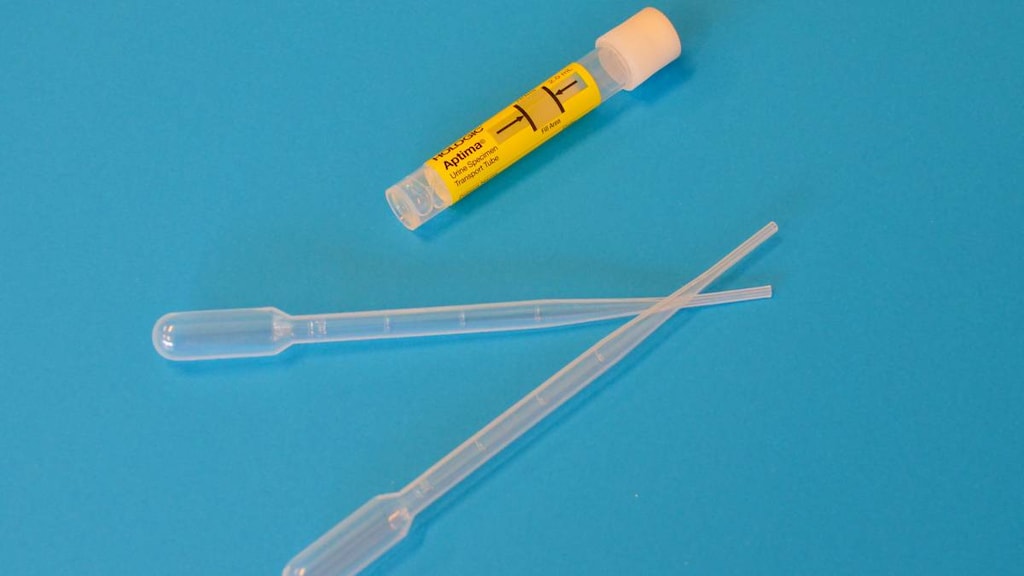Dosage Forms
Excipient information presented when available (limited, particularly for generics); consult specific product labeling.
Packet, Oral:
Monurol: 3 g (1 ea) [orange flavor]
Pharmacology
Mechanism of Action
As a phosphonic acid derivative, fosfomycin inhibits bacterial wall synthesis (bactericidal) by inactivating the enzyme, pyruvyl transferase, which is critical in the synthesis of cell walls by bacteria.
Pharmacokinetics/Pharmacodynamics
Absorption
Oral: Rapidly absorbed.
Distribution
Oral: Vd: 90 to 180 L
IV [Canadian product]: 0.3 L/kg
Excretion
Oral: Urine (38% as unchanged drug); feces (18% as unchanged drug)
IV [Canadian product]: 80 to 90% (urine as unchanged drug)
Time to Peak
Serum: Oral: 2 hours; Within 4 hours with high-fat meal.
Half-Life Elimination
Oral: 3 to 8 hours; CrCl <54 mL/minute: 50 hours; Hemodialysis patients: 40 hours
IV [Canadian product]: 2 hours; Elderly and/or critically ill patients: 3.6 to 3.8 hours; CVVHF: 12 hours
Protein Binding
None.
Use in Specific Populations
Special Populations: Renal Function Impairment
Oral: Urinary excretion decreases to 11% in patients with CrCl 7 to 54 mL/minute.
Use: Labeled Indications
Oral packet:
Cystitis, acute uncomplicated: Treatment of uncomplicated urinary tract infections (acute cystitis) in women due to susceptible strains of Escherichia coli and Enterococcus faecalis.
Limitations of use: Not indicated for the treatment of pyelonephritis or perinephric abscess. If persistence or reappearance of bacteriuria occurs after treatment with fosfomycin, other therapeutic agents should be selected.
IV [Canadian product]: Note: Reserve for use when it is considered inappropriate to use commonly recommended antibacterial agents, or when these alternative antibacterial agents have failed to demonstrate efficacy. Fosfomycin should usually be used as part of a combination antibacterial regimen.
Meningitis, bacterial: Treatment of bacterial meningitis and associated bacteremia.
Osteomyelitis: Treatment of osteomyelitis and associated bacteremia.
Pneumonia, hospital-acquired: Treatment of lower respiratory tract infection and associated bacteremia.
Urinary tract infection, complicated: Treatment of complicated urinary tract infection and associated bacteremia.
Use: Off Label
Prostatitis, chronic bacterialc
Data from a limited number of patients studied suggest that oral fosfomycin may be beneficial for the treatment of chronic bacterial prostatitis Karaiskos 2019, Los Arcos 2015.
Recurrent cystitis, prophylaxisb
Data from two randomized trials (one blinded and one open-label) suggest that oral fosfomycin may be beneficial for the prevention of recurrent cystitis Costantini 2014, Rudenko 2005.
Contraindications
Hypersensitivity to fosfomycin or any component of the formulation
Dosage and Administration
Dosing: Adult
Meningitis, bacterial: IV [Canadian product]: 16 to 24 g/day in 3 to 4 divided doses (maximum: 8 g/dose). Reserve high-dose regimens (>16 g/day) for severe infections known or suspected to be caused by organisms with decreased susceptibility to fosfomycin.
Osteomyelitis: IV [Canadian product]: 12 to 24 g/day in 2 to 3 divided doses (maximum: 8 g/dose). Reserve high-dose regimens (>16 g/day) for severe infections known or suspected to be caused by organisms with decreased susceptibility to fosfomycin.
Pneumonia, hospital-acquired: IV [Canadian product]: 12 to 24 g/day in 2 to 3 divided doses (maximum: 8 g/dose). Reserve high-dose regimens (>16 g/day) for severe infections known or suspected to be caused by organisms with decreased susceptibility to fosfomycin.
Prostatitis, chronic bacterial (alternative agent) (off-label use): Note: Reserve for use when other options are not appropriate because of resistance or intolerance. The optimal dose has not been established; the following are some suggested dosing regimens:
Oral: 3 g every 2 to 3 days (Los-Arcos 2015) or 3 g once daily for 1 week followed by 3 g once every 48 hours (Karaiskos 2019). Duration is ≥6 weeks (Karaiskos 2019; Los-Arcos 2015).
Urinary tract infection: Note: Uncomplicated urinary tract infection (UTI) has traditionally been defined as infection in an otherwise healthy nonpregnant female with a normal urinary tract; UTI in other patient populations has been considered complicated. Some experts instead categorize UTI as either acute simple cystitis (mild infection limited to the bladder with no signs/symptoms of upper tract, prostate, or systemic infection in a nonpregnant adult) or complicated UTI (pyelonephritis or cystitis symptoms with other signs/symptoms of systemic infection) (Hooton 2019a).
Acute uncomplicated cystitis or acute simple cystitis: Oral: 3 g as a single dose (Hooton 2019a; Hooton 2019b; manufacturer's labeling). Note: Multidose regimens (eg, 3 g once every 2 to 3 days for 3 doses) have been described, particularly for multidrug-resistant UTIs; however, it is unknown whether these have greater efficacy than single-dose therapy (Babiker 2019; Giancola 2017; Loethen 2017; Neuner 2012; Qiao 2013). Fosfomycin may be less effective than other first-line agents, although data are conflicting (Huttner 2018; IDSA/ESCMID [Gupta 2011]); Medical Letter 1997; Stein 1999; Van Pienbroek 1993).
Complicated UTI: IV [Canadian product]: 12 to 16 g/day in 2 to 3 divided doses (maximum: 8 g/dose) (manufacturer's labeling). Note: Some experts reserve use for multidrug-resistant infections when other options are not appropriate because of resistance or intolerance (Grabein 2017; Sastry 2016).
Recurrent cystitis, prophylaxis (alternative agent) (off-label use): Note: Prophylaxis may be considered in nonpregnant women with bothersome, recurrent, uncomplicated cystitis despite nonantimicrobial preventative measures (Albert 2004; Hooton 2019c).
Continuous prophylaxis: Oral: 3 g once every 7 to 10 days (Costantini 2014; Rudenko 2005). Note: Some experts use a shorter dosing interval (eg, every 3 to 4 days), but there is no clinical evidence that this is more effective (Hooton 2019c).
Dosing: Geriatric
Refer to adult dosing.
Dosing: Pediatric
Fosfomycin tromethamine (Monurol): Urinary tract infection, uncomplicated: Limited data available: Note: Oral formulation should not be used for pyelonephritis or perinephric abscess.
Children <12 years: Oral: 2,000 mg as a single dose (Baquero-Artigao 2019; Careddu 1987; Principi 1990; Varese 1987).
Children ≥12 years and Adolescents: Oral: 3,000 mg as a single dose (Baquero-Artigao 2019; Stein 1999).
Fosfomycin sodium (Ivozfo [Canadian product]): Note: High-dose regimens (>300 mg/kg/day for ≤40 kg and >16 g/day for >40 kg) may be considered for severe infections known or suspected to be caused by organisms with moderate susceptibility. Data is limited for doses >16 g/day, monitor closely.
Meningitis, bacterial: Infants, Children, and Adolescents: IV:
<10 kg: 200 to 300 mg/kg/day in 3 divided doses.
10 to 40 kg: 200 to 400 mg/kg/day in 3 to 4 divided doses.
>40 kg: 16 to 24 g/day in 3 to 4 divided doses; maximum dose: 8 g/dose.
Osteomyelitis: Infants, Children, and Adolescents: IV:
<10 kg: 200 to 300 mg/kg/day in 3 divided doses.
10 to 40 kg: 200 to 400 mg/kg/day in 3 to 4 divided doses.
>40 kg: 12 to 24 g/day in 2 to 3 divided doses; maximum dose: 8 g/dose.
Respiratory tract infection (lower), nosocomial: Infants, Children, and Adolescents: IV:
<10 kg: 200 to 300 mg/kg/day in 3 divided doses.
10 to 40 kg: 200 to 400 mg/kg/day in 3 to 4 divided doses.
>40 kg: 12 to 24 g/day in 2 to 3 divided doses; maximum dose: 8 g/dose.
Urinary tract infection, complicated: Infants, Children, and Adolescents: IV:
<10 kg: 200 to 300 mg/kg/day in 3 divided doses.
10 to 40 kg: 200 to 400 mg/kg/day in 3 to 4 divided doses.
>40 kg: 12 to 16 g/day in 2 to 3 divided doses; maximum dose: 8 g/dose.
Reconstitution
IV [Canadian product]: Shake vial prior to reconstitution to loosen powder. Reconstitute vial with D5W; 10 mL for the 2 g vial, 20 mL for the 4 g vial, and 40 mL for the 8 g vial. Shake well to dissolve. Further dilute solution by withdrawing contents of vial and adding to infusion bag of D5W as follows: 50 mL for the 2 g vial (total volume 60 mL), 100 mL for the 4 g vial (total volume 120 mL), and 250 mL for the 8 g vial (total volume 290 mL); concentration of final solution should not exceed 40 mg/mL.
Oral packet: Pour contents of envelope into 3 to 4 oz (90 to 120 mL) of water (not hot), stir to dissolve, and take immediately.
Administration
Oral: Always mix with 3 to 4 oz (90 to 120 mL) cool water before ingesting; do not administer in its dry form or mix with hot water. May be administered without regard to meals.
IV [Canadian product]: Infuse 2 g dose over ≥15 minutes; 4 g dose over ≥30 minutes; and 8 g dose over ≥60 minutes. Consider extended infusion time (≤4 hours for the 4 or 8 g dose) in patients at high risk for hypokalemia.
Dietary Considerations
Some products may contain sodium.
Storage
IV [Canadian product]: Store intact vials at 15°C to 30°C (59°F to 86°F). Reconstituted solution may be stored at 2°C to 8°C (36°F to 46°F) for ≤48 hours. Diluted solution may be stored at 2°C to 8°C (36°F to 46°F) or 25°C (77°F) for ≤48 hours. Protect from light.
Oral packet: Store at 25°C (77°F); excursions are permitted between 15°C and 30°C (59°F and 86°F).
Drug Interactions
BCG (Intravesical): Antibiotics may diminish the therapeutic effect of BCG (Intravesical). Avoid combination
BCG Vaccine (Immunization): Antibiotics may diminish the therapeutic effect of BCG Vaccine (Immunization). Monitor therapy
Cholera Vaccine: Antibiotics may diminish the therapeutic effect of Cholera Vaccine. Management: Avoid cholera vaccine in patients receiving systemic antibiotics, and within 14 days following the use of oral or parenteral antibiotics. Avoid combination
Gastrointestinal Agents (Prokinetic): May decrease the serum concentration of Fosfomycin. Monitor therapy
Lactobacillus and Estriol: Antibiotics may diminish the therapeutic effect of Lactobacillus and Estriol. Monitor therapy
Sodium Picosulfate: Antibiotics may diminish the therapeutic effect of Sodium Picosulfate. Management: Consider using an alternative product for bowel cleansing prior to a colonoscopy in patients who have recently used or are concurrently using an antibiotic. Consider therapy modification
Typhoid Vaccine: Antibiotics may diminish the therapeutic effect of Typhoid Vaccine. Only the live attenuated Ty21a strain is affected. Management: Vaccination with live attenuated typhoid vaccine (Ty21a) should be avoided in patients being treated with systemic antibacterial agents. Use of this vaccine should be postponed until at least 3 days after cessation of antibacterial agents. Consider therapy modification
Adverse Reactions
1% to 10%:
Central nervous system: Headache (4% to 10%), pain (2%), dizziness (1% to 2%)
Dermatologic: Skin rash (1%)
Gastrointestinal: Diarrhea (9% to 10%), nausea (4% to 5%), abdominal pain (2%), dyspepsia (1% to 2%)
Genitourinary: Vaginitis (6% to 8%), dysmenorrhea (3%)
Neuromuscular & skeletal: Back pain (3%), weakness (1% to 2%)
Respiratory: Rhinitis (5%), pharyngitis (3%)
<1%, postmarketing, and/or case reports: Abnormal stools, anaphylaxis, angioedema, anorexia, aplastic anemia, cholestatic jaundice, constipation, dermatological disease, drowsiness, dysuria, ear disease, exacerbation of asthma, fatigue, fever, flatulence, flu-like symptoms, hearing loss, hematuria, hepatic necrosis, increased serum ALT, insomnia, lymphadenopathy, menstrual disease, migraine, myalgia, nervousness, optic neuritis, paresthesia, pruritus, toxic megacolon, vomiting, xerostomia
Warnings/Precautions
Concerns related to adverse effects:
- Electrolyte abnormalities: IV [Canadian product]: Sodium content (320 mg per gram of IV fosfomycin) should be considered in patients requiring sodium restriction. Use with caution in patients with cardiac insufficiency, hypertension, hyperaldosteronism, hypernatremia, pulmonary edema, or hepatic cirrhosis. A high sodium load may also result in decreased serum potassium level. Assess electrolytes (sodium, potassium, and phosphate) and fluid balance regularly, in particular for patients receiving digoxin or when using the high-dose regimen (>16 g/day in adults and pediatric patients weighing >40 kg; >300 mg/kg/day in pediatric patients ≤40 kg); there are limited safety data for doses >16 g/day.
- Hepatic effects: Hepatic injury, including steatosis and hepatitis, has been reported; usually reversible upon discontinuation. Periodically monitor liver function.
- Hypersensitivity: Hypersensitivity reactions, including anaphylactic shock, have been reported (rare). Discontinue use and institute supportive measures at the first sign(s) of a hypersensitivity reaction.
- Superinfection: Prolonged use may result in fungal or bacterial superinfection, including Clostridioides (formerly Clostridium) difficile-associated diarrhea (CDAD) and pseudomembranous colitis; CDAD has been observed >2 months postantibiotic treatment.
Disease-related concerns:
- Renal impairment: IV [Canadian product]: Dosage adjustment required in patients with renal impairment.
Concurrent drug therapy issues:
- Drug-drug interactions: Potentially significant interactions may exist, requiring dose or frequency adjustment, additional monitoring, and/or selection of alternative therapy. Consult drug interactions database for more detailed information
Monitoring Parameters
IV [Canadian product]: Serum electrolytes; renal function, liver function
Pregnancy
Pregnancy Considerations
Fosfomycin crosses the placenta.
Single dose fosfomycin has been shown to clear bacteria in the urine of pregnant females treated for asymptomatic bacteriuria. However, clinical outcomes (such as pyelonephritis and preterm labor) following single dose therapy are not well studied in pregnancy. When treatment is needed, a 4- to 7-day regimen with an appropriate antibiotic is currently recommended (Nicolle [IDSA 2019]).
Patient Education
What is this drug used for?
- It is used to treat a urinary tract infection (UTI).
Frequently reported side effects of this drug
- Headache
- Vaginal pain, itching, and discharge
- Nausea
- Diarrhea
Other side effects of this drug: Talk with your doctor right away if you have any of these signs of:
- Clostridioides (formerly Clostridium) difficile colitis (C. diff)-associated diarrhea like abdominal pain or cramps, severe diarrhea or watery stools, or bloody stools.
- Signs of a significant reaction like wheezing; chest tightness; fever; itching; bad cough; blue skin color; seizures; or swelling of face, lips, tongue, or throat.
Note: This is not a comprehensive list of all side effects. Talk to your doctor if you have questions.
Consumer Information Use and Disclaimer: This information should not be used to decide whether or not to take this medicine or any other medicine. Only the healthcare provider has the knowledge and training to decide which medicines are right for a specific patient. This information does not endorse any medicine as safe, effective, or approved for treating any patient or health condition. This is only a brief summary of general information about this medicine. It does NOT include all information about the possible uses, directions, warnings, precautions, interactions, adverse effects, or risks that may apply to this medicine. This information is not specific medical advice and does not replace information you receive from the healthcare provider. You must talk with the healthcare provider for complete information about the risks and benefits of using this medicine.




